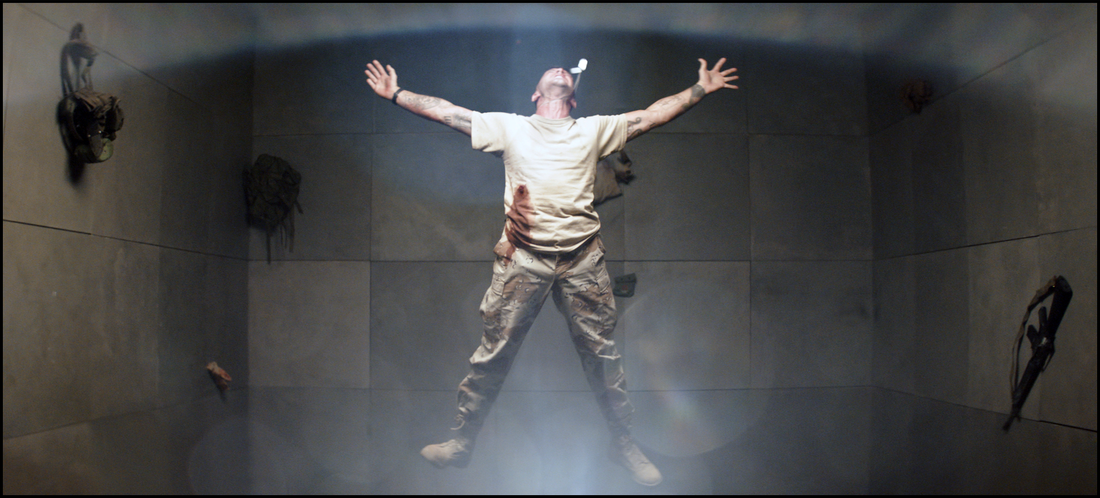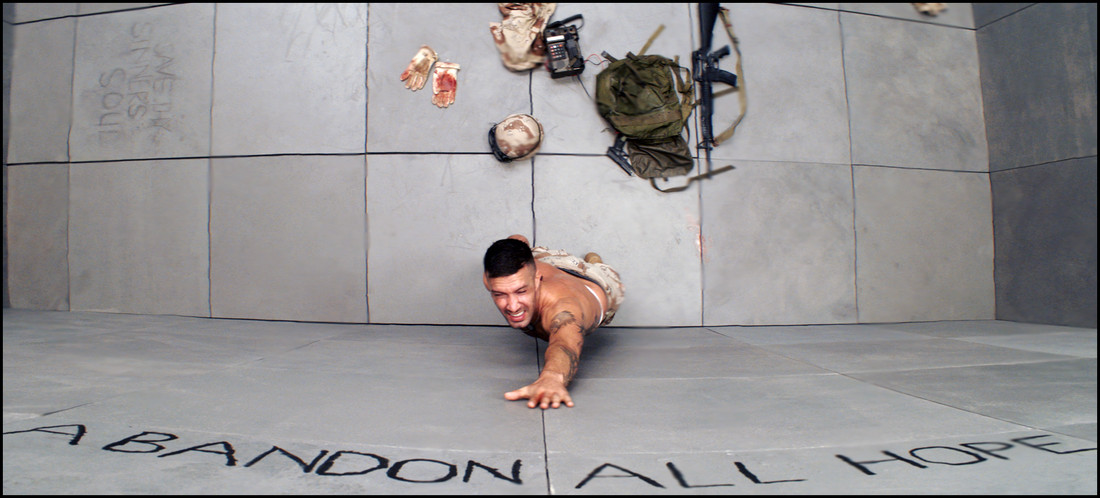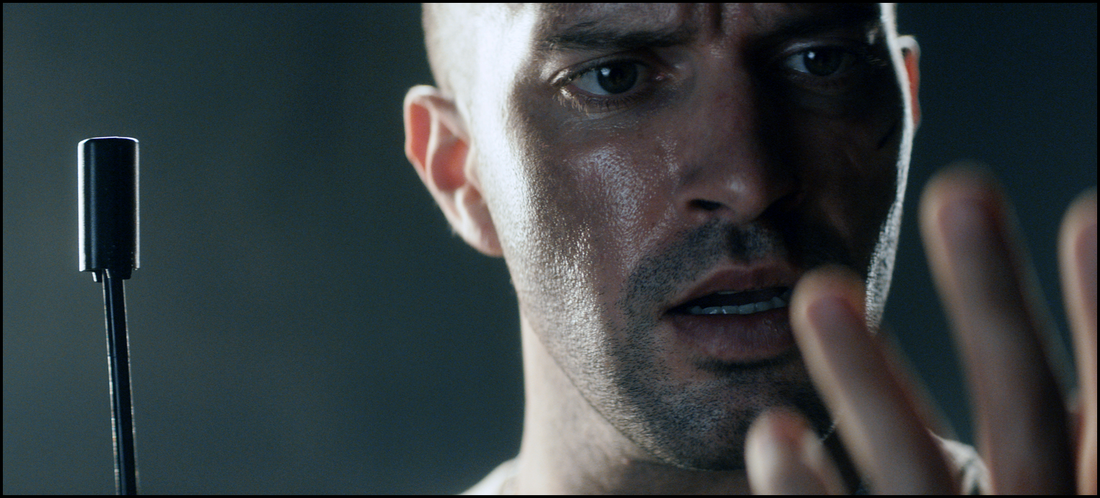For those unaware, the ‘locked box’ represents a subset of the general mystery genre, one wherein the protagonist and others are incarcerated (of sorts) in a single setting. Then, a murder takes place ... or the suspects have been gathered for eventually questioning, confrontation, and exposure. Because of the popularity of this subset, its framework was eventually borrowed by storytellers of other genres who saw the construct as being entirely exploitable in their fields. Though some might disagree, the Saw franchise spilled an awful lot of blood putting similar plotting to good (yet torturous) use in Horror; and – in the realm of Science Fiction – the various flicks in the Cube enterprise bear strong similarities.
Having seen all of the pictures that make up the Cube universe, I’d have to say my greatest disappointment in their collective endeavor is that characters were, mostly, secondary considerations: what gave the various films their collective pulse is the Cube – its mechanical iterations, the way the architecture moved, morphed, and expanded in the pursuit of challenging those trapped within. Sure, audiences learned a bit here and there about the players in the grand game; but, for me, personal drama always felt secondary to the robotic construct of their prisons. At best, I was given someone to root for; at worst, they were bodies just waiting for the kill shot. We’d part company when the credits rolled.
To its credit, 2022’s The Abandon lifts up the ‘locked box’ premise and populates the screen with (vastly) fewer characters, giving viewers the chance to not only get to know them in an increasingly intimate way but also to better understand how both they and the ‘box’ tick. While I’ll concede the film still left me with questions in its last reel, I cared enough about its main players that I’m hopeful for a follow-up. That’s a marked improvement over Cube, but I can’t help wondering if others were disappointed by the low body count.
From the film’s IMDB.com citation:
“A wounded soldier awakens in a strange cube that tests his physical and mental limits as he attempts to find a way to escape against a ticking clock.”
I think one way of approaching what to make of the SciFi-themed release, The Abandon, is to consider it a metaphor for our modern times.
With all of the space we have on this big blue marble called Earth, we still find a way to silo ourselves off in a very limited view of the world around us; and then we spend the better part of the time given to us trying to figure out what each of the little signs we encounter along the way could possibly mean. It’s very human to notice things that have changed and to ascribe greater meaning to them than perhaps what the universe intends, and I’ve read that we psychologically do this to better understand the complexities of what we endure. After all, we’re intelligent creatures, so shouldn’t we be able to figure this all out in the end?
As our days wear on, this silo typically grows smaller and smaller. (Rarely does it grow larger.) Friends and family pass away. Favorite businesses close down. Memories fade, and perhaps we begin to experience some disillusion with this thing called life. Connections are lost; and – if we don’t fill up these voids with new ones – our mental faculties begin to degrade to the point where we’re not so much living as we are existing.
Symbolically, this is where Miles Willis (played by Jonathan Rosenthal) and Damsey Robins (Tamara Perry) find themselves, both trapped in their respective cubes. They’ve found themselves not only isolated from the world-at-large but sequestered in a space that is curiously shrinking as the hours tick by. Communicating only over Willis’ satellite radio, they’re forced to push past whatever separates them – background, upbringing, ideology, gender, etc. – and find a point wherein they can establish trust. If they don’t grow individually, then they’re sure to perish together. It’s the classic and cinematic race-against-time wherein the villain never shows his (or her) face.
Actors Rosenthal and Perry are gifted with a clever script from Dwain Worrell, whose other screenwriting credits include episodes from Marvel’s Iron Fist serial (Netflix) and CBS’s FBI: Most Wanted. Worrell put in great effort in crafting characters relatable both to one another and their audience while putting these players through some extraordinary circumstances. Theirs is not an easy journey, but they inevitably reach the necessary conclusion: survival is never guaranteed, but one’s chances are exponentially greater when joining forces instead of opposing at all costs.
If I have any quibbles with The Abandon, it will have to be that it joins an increasing number of Science Fiction entries that seem to be ending when the real story is just beginning.
2014’s The Signal (written in part and directed by William Eubank) dealt with friends trapped in some government facility due to their increasingly treacherous hold on reality. Without spoiling the ending (for those who may not have seen it), the trio are confined, but the audience has no concept of just how confined their entire world is in the film’s final reveal. Clearly, they’re somewhere else; and – while the script makes some suggestions – it’s never definitely answered. Their fates? Well, we’ll likely never know.
2018’s Freaks (co-written and co-directed by Zach Lipovsky and Adam B. Stein) is a great superhero-style drama that taps such star power as Emile Hirsch, Bruce Dern, and Grace Park. The script explores a young girl, Chloe, who discovers there’s a big world outside her front door once she escapes the confinement forced upon her by dear old dad. Eventually, she learns that her imprisonment had a greater purpose; but, similar to The Signal, it all comes to an end when audiences are just coming to appreciate Chloe’s gifts.
In the same way (but, again, I won’t spoil it), The Abandon closes with a big reveal, one that hides more than a single secret (if you’ve been watching closely); and then it all fades to black. Worrell’s script has a suggestion based on the outcome of Willis and Robins’ solution, but I’m still left with questions based entirely on what’s filmed. Did the duo truly solve the puzzle, save themselves, and save the world … or was all of this just a set-up for something a bit more nefarious?
Again, we may never know.
Having watched more than my share of films and read more than my share of interviews, I realize that occasionally this is where storytellers prefer leaving an audience. They spin tales that’ll only take you so far, and then what happens next is entirely up to the individual. Though I appreciate the effort, I’m not one who dabbles all that much in speculation; and I prefer to have the story particulars fully spelled out for me.
Still, if this is all I get with Willis and Robins, at least I can find some peace in knowing that they parted company the best of friends. They’re once again connected – no longer trapped in their respective silos – and out amongst the movers and shakers once more.
Recommended.
The Abandon bares more than a passing resemblance to any one of the popular direct-to-DVD Cube movies, but the methodology of solving the central puzzle – as well as the film’s faceless villain – diverges enough so that it doesn’t feel as derivative as I initially suspected. What works best is the film’s increasing claustrophobia – doom always feels oppressive in close quarters – as well as the rapport between the leads (Rosenthal and Perry). Alas, this story ends just as it’s really beginning; unless there’s a significant follow-up, I’m left with no way of knowing what truly is next for this Earthly universe.
In the interests of fairness, I’m pleased to disclose that the fine folks at Millennial Public Relations provided me with a complimentary streaming link of The Abandon (2022) by request for the expressed purposes of completing this review; and their contribution to me in no way, shape, or form influenced my opinion of it.
-- EZ





 RSS Feed
RSS Feed